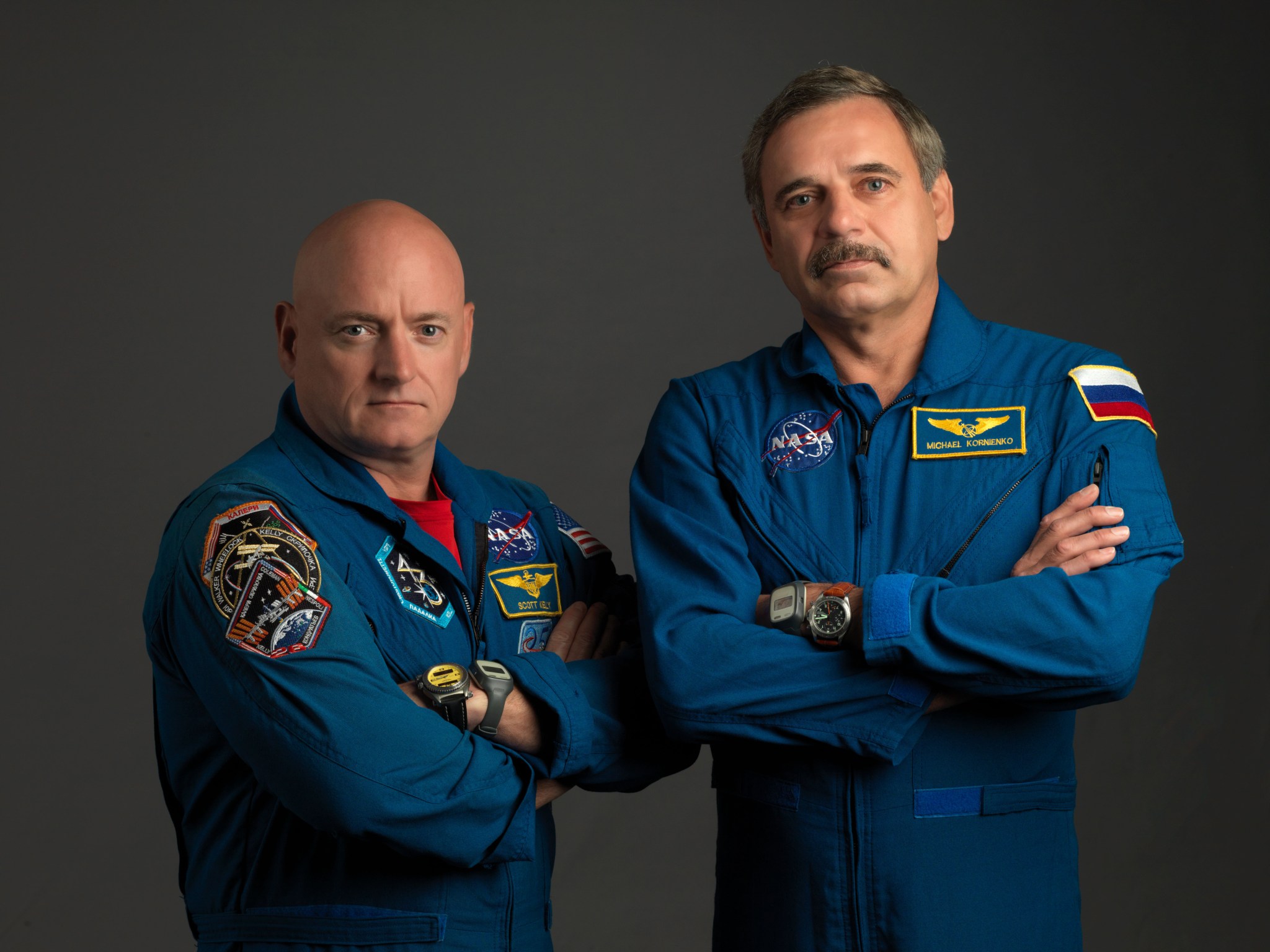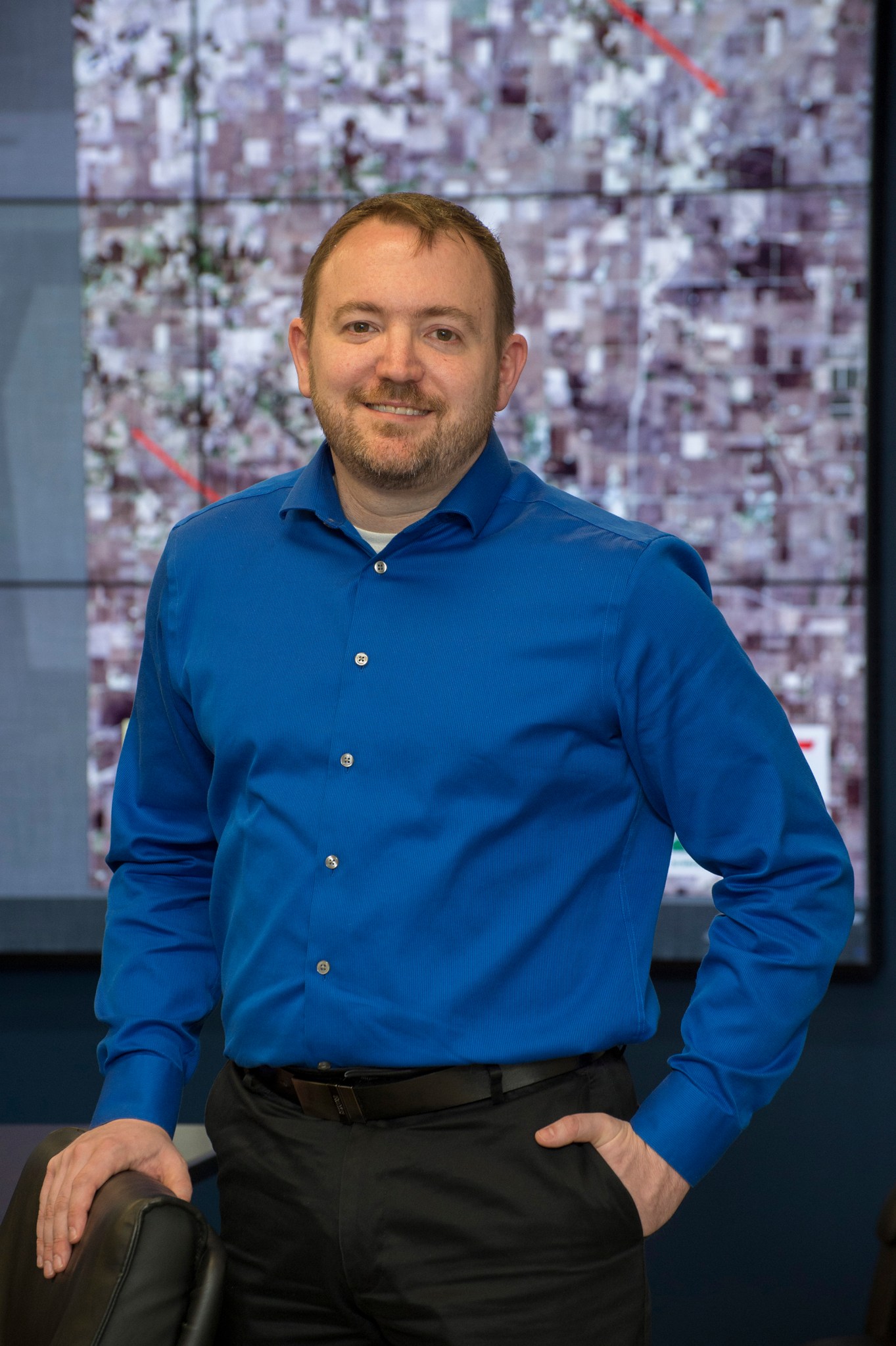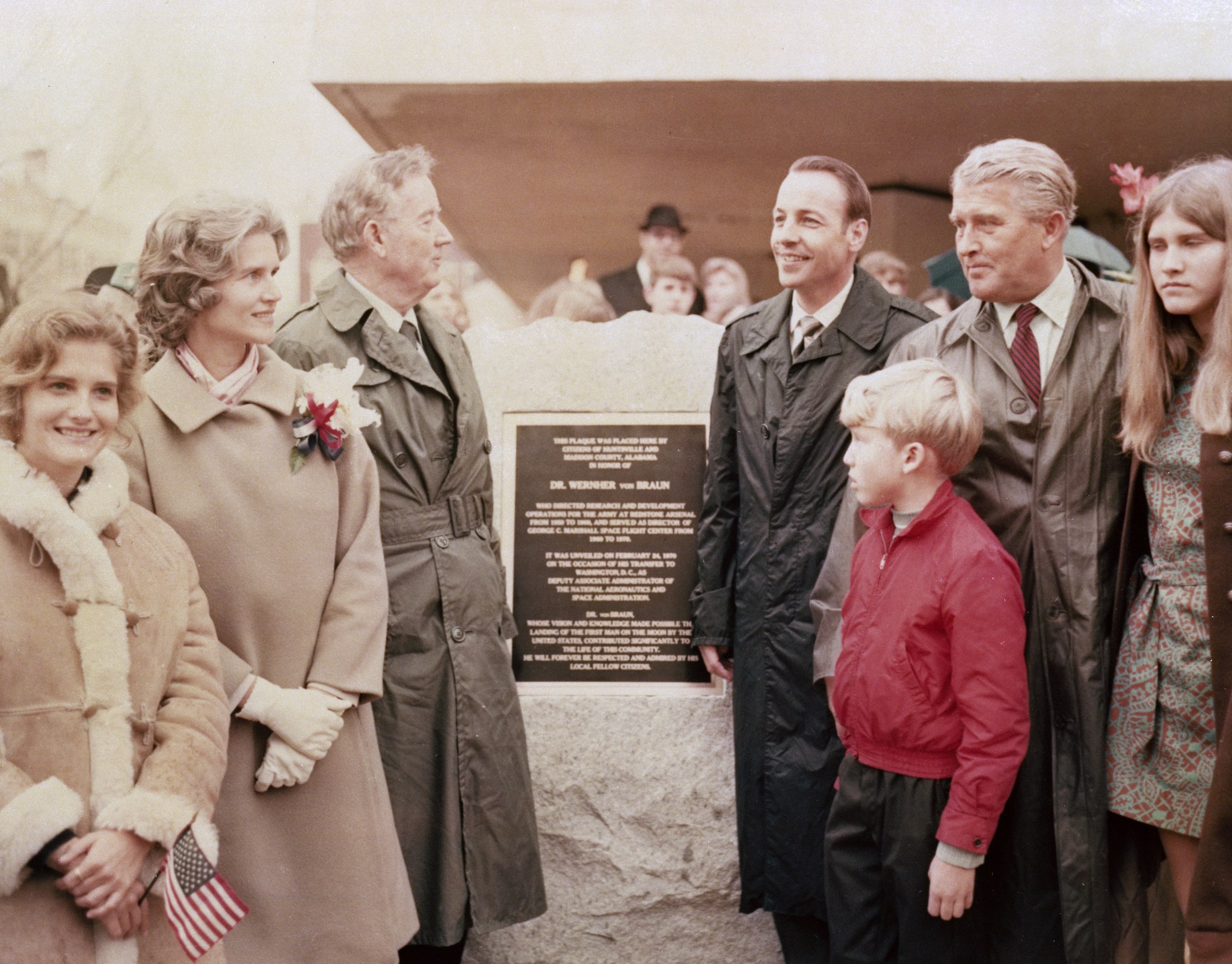In This Week’s Star
- International Space Station Year In Space Mission Nears Completion
- Welding Wonder Delivers Confidence for SLS Core Stage
- Marshall Scientist Named as Recipient of 2016 PECASE Award
- Marshall Center Hosts Annual Small Business Alliance Meeting
- Rocket City Students Have Friends in High Places
- Mentor-Protégé Agreement Signed Between NASA Contractor and Native-American, Women-Owned Small Business
- Black History Month Speaker Calls America ‘Beacon of Hope’
- This Week in NASA History: Von Braun Transferred to NASA Headquarters — February 1970
International Space Station Year In Space Mission Nears Completion
The International Space Station Year In Space Mission is drawing to a close as NASA astronaut Scott Kelly and cosmonaut Mikhail Kornienko of the Russian space agency Roscosmos plan for their return to Earth — scheduled for March 1.
During their record-setting mission, Marshall’s Payload Operations Integration Center worked around the clock to help them complete almost 400 investigations. Kelly and Kornienko participated in a number of studies to provide new insights into how the human body adjusts to weightlessness, isolation, radiation and the stress of long-duration spaceflight. Kelly’s twin brother, former NASA astronaut Mark Kelly, participated in a parallel “Twins Study” on Earth to help scientists compare the effects on the body and mind in space.
The Year In Space mission will help prepare crews for longer missions to deep space including the journey to Mars. After the landing, the mission is actually more like a three-year mission, as research will continue on the ground with investigators around the world conducting post-flight studies and analyzing results they began collecting a year before Kelly and Kornienko arrived at the station.
You can follow Kelly — who spent more time in space on a single mission than any American astronaut — as he finishes up the Year In Space. NASA TV is preparing to provide live coverage beginning with Kelly’s final news conference from the station on Feb. 25 at 11:04 a.m. The 30-minute news conference will take place less than a week before Kelly lands in Kazakhstan aboard a Soyuz capsule, completing his 340-day mission. Live coverage of the end of the mission will begin March 1 at 3:15 p.m. on NASA TV as the returning crew enters the Soyuz capsule for return to Earth. Undocking from the station will follow approximately three hours later with landing coverage starting at 10:15 p.m.
Kelly, Kornienko and Roscosmos cosmonaut Sergey Volkov are scheduled to land in Kazakhstan at 11:27 p.m. The next day, March 2, Kelly will return to Houston.
Kelly launched to the space station March 27, 2015, from the Baikonur Cosmodrome in Kazakhstan. After landing, he will hold the record among U.S. astronauts for cumulative time in space, with 520 days.
The station’s Program Science Office has compiled a list of 10 things to know about Kelly’s year in space, available here.
For more information, to watch the news conference and follow the crew’s return flight from the space station, click here. Follow the news conference and return flight home on social media by using #YearInSpace and following the International Space Station’s Twitter, Facebook, Instagram and Flickr accounts.
Welding Wonder Delivers Confidence for SLS Core Stage
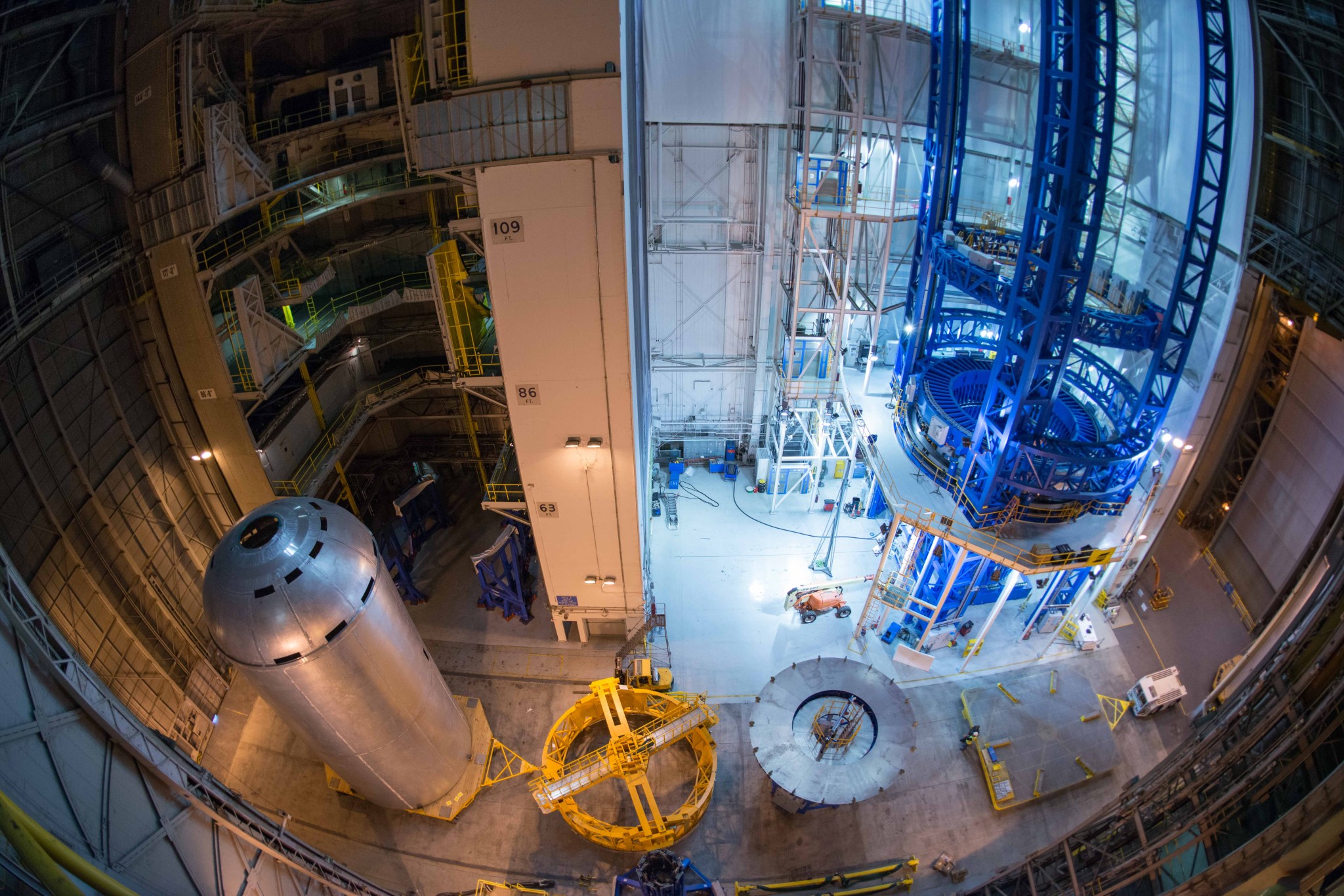
A liquid hydrogen tank weld confidence article, left, for the core stage of NASA’s new rocket, the Space Launch System, recently was completed on the Vertical Assembly Center at Michoud Assembly Facility. The completed confidence article, consisting of a dome and two barrels, verifies weld procedures are working as planned and tooling-to-hardware interfaces are correct. It also gives the weld team experience in bringing all aspects of hardware, tooling and software together to create a tank. Once a confidence article is completed, the structural qualification article is welded, which closely replicates flight hardware and processing procedures. The structural qualification article will be rigorously tested as part of the design verification process for the core stage. The VAC is the largest spacecraft welding tool in the world and is part of six state-of-the-art tools designed to weld the core stage of SLS. More than 50 pieces of flight and qualification hardware for the core stage liquid oxygen and liquid hydrogen tanks have been completed and are ready for welding in the VAC. A fish-eye lens was used to capture the scale of the machinery. (NASA/Michoud/Steven Seipel)
Marshall Scientist Named as Recipient of 2016 PECASE Award
Andrew Molthan, a scientist at NASA’s Marshall Space Flight Center, was named a recipient of the 2016 Presidential Early Career Award for Scientists and Engineers by President Barack Obama on Feb. 18. One of six NASA researchers selected, Molthan and 100 other federal researchers will receive their awards in a ceremony later this year in Washington.
The PECASE awards represent the highest honor bestowed by the U.S. government on scientists and engineers who are beginning their research careers. The award recognizes recipients’ exceptional potential for leadership at the frontiers of scientific knowledge, as well as their commitment to community service as demonstrated through professional leadership, education or community outreach.
Molthan was recognized for his support of NASA and scientific community service. His nomination for the award included citations of his research activities in numerical weather prediction, early efforts in cloud computing, support for NASA’s Applied Sciences Disasters program and work focused on the transition of NASA and NOAA modeling and observations to improve weather forecasting through his participation in NASA’s Short-term Prediction Research and Transition — or SPoRT — Center at Marshall.
“Molthan was influential in supporting NASA’s response efforts during the 2012 Superstorm Sandy,” said Daniel Schumacher, manager of the Science and Technology office at Marshall. “He quickly developed an experimental ‘blackout’ product derived from satellite imagery, which was then provided to and used by federal agencies during emergency response efforts.”
Molthan has also mentored several Marshall interns and local graduate students, served on boards and committees within the American Meteorological Society and partnered with colleagues to bolster diversity and inclusion activities for Marshall lesbian, gay, bisexual and transgender team members and their allies.
Molthan joined Marshall’s Earth Science Office as a Cooperative Education Program student in 2008 and was selected as a Research Meteorologist in December 2009 after completing his doctorate at the University of Alabama in Huntsville.
The PECASE awards were created to foster innovative developments in science and technology, increase awareness of careers in science and engineering, give recognition to the scientific missions of participating agencies, enhance connections between fundamental research and many of the grand challenges facing the nation and highlight the importance of science and technology for America’s future. For a complete list of 2016 award winners, click here.
Marshall Center Hosts Annual Small Business Alliance Meeting
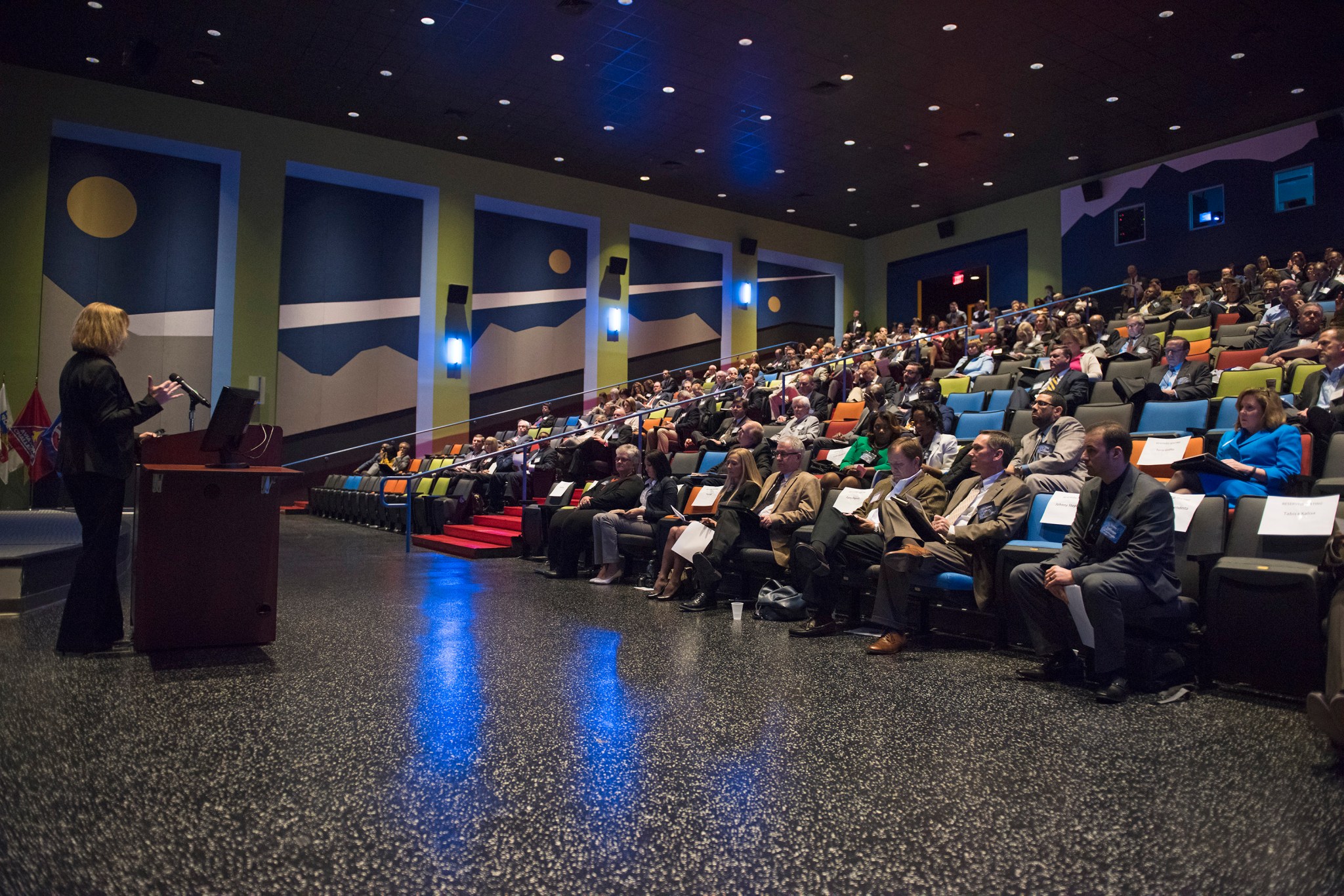
Hundreds of representatives from NASA and the agency’s aerospace and industry partners, including large and small business prime contractors and subcontractors, attended NASA Marshall Space Flight Center’s Small Business Alliance meeting at the U.S. Space & Rocket Center’s Davidson Center for Space Exploration on Feb. 18. Established in 2007, the Small Business Alliance helps small businesses pursue NASA procurement and subcontracting opportunities. Guest speakers included Marshall Center Director Todd May; Johnny Stephenson, director of Marshall’s Office of Strategic Analysis and Communications; Steve Miley, director of the Marshall Office of Procurement; and David Brock, small business specialist at Marshall. (NASA/MSFC/Charles Beason)
Rocket City Students Have Friends in High Places
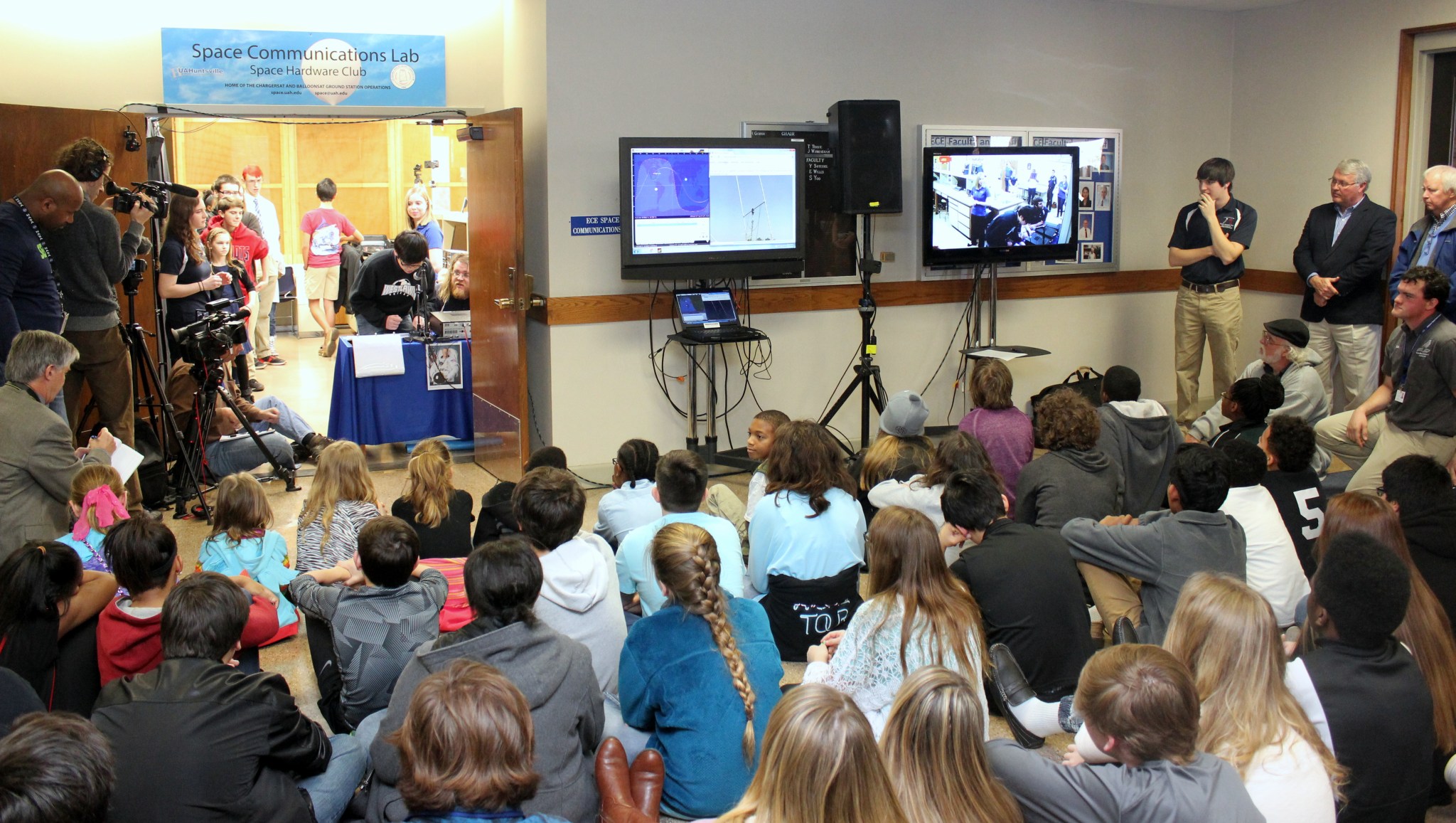
Local students speak by amateur radio with NASA astronaut Tim Kopra aboard the International Space Station as it flies over Huntsville on Feb. 19. Kopra, an Expedition 46 flight engineer who launched to the station on Dec. 15, 2015, answered more than a dozen questions about living and working in space. Students from Madison County and Huntsville City Schools asked about astronaut sleep schedules, how education prepared them for space travel and what it’s like being away from family. The event, part of NASA’s Amateur Radio on the International Space Station program, was hosted by the Space Communications Lab at the University of Alabama in Huntsville and staffed by the UAH Space Hardware Club. ARISS events provide authentic, live interactions with ISS crew members, while teaching students about space exploration, scientific research and space-related career possibilities. (NASA/MSFC/Christopher Blair)
Mentor-Protégé Agreement Signed Between NASA Contractor and Native-American, Women-Owned Small Business
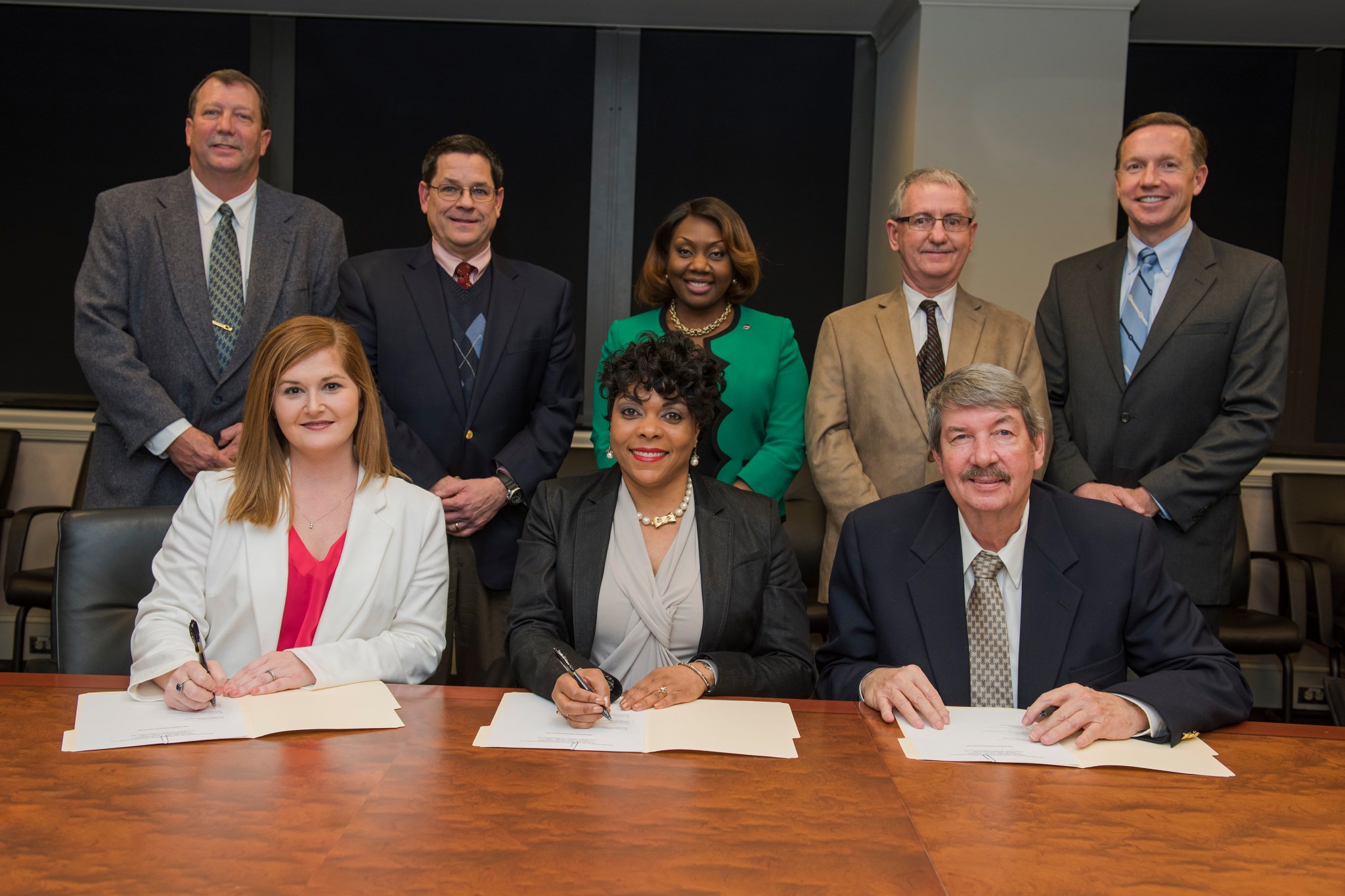
Executives from URS Federal Services, Inc., and Seabrook Solutions, LLC Inc., both of Huntsville, sign a NASA Mentor-Protégé Agreement on Feb. 18 at NASA’s Marshall Space Flight Center. Under this agreement, URS — a NASA prime contractor under the Center Operations Support Services Contract — will mentor Seabrook by providing strategic business and technical support strengthening this growing company’s competitiveness. The 12-month agreement is the fourth of its kind overseen by Marshall, fostering a partnership between a NASA prime contractor and a small business under the NASA Mentor-Protégé Program. Signing are, seated from left, Lang Sims, president and CEO of Seabrook Solutions; Kimberly Williams, contracting officer representative for Marshall; and Donnie Crouch, program manager for URS. Standing, from left, are Kevin Primm, contracting officer representative for Marshall; Roy Malone, director of Marshall’s Office of Center Operations; Tabisa Kalisa, program manager for NASA’s Office of Small Business Programs; David Brock, small business specialist in Marshall’s Office of Procurement; and Steve Miley, director of Marshall’s Office of Procurement. (NASA/MSFC/Charles Beason)
Black History Month Speaker Calls America ‘Beacon of Hope’
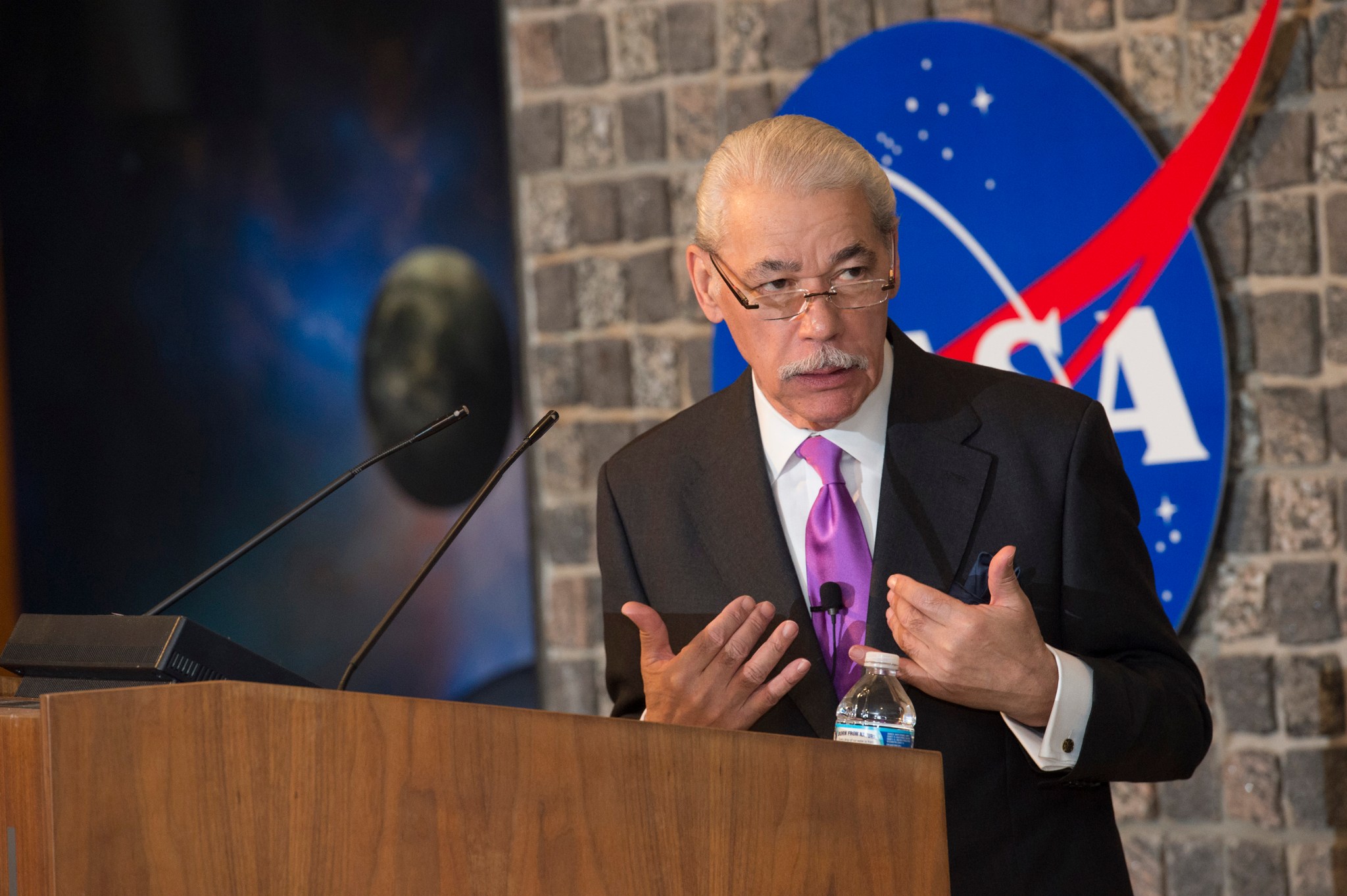
Bestselling author and motivational speaker Dr. George Fraser addresses a crowd of NASA Marshall Space Flight Center team members on Feb. 18 in Morris Auditorium, Building 4200. Reflecting on the 2016 theme of Black History Month, “Hallowed Grounds,” Fraser said America itself is hallowed ground, and thus its citizens have a global responsibility. “We are the beacon of hope for every single person of African descent in the entire world,” he said. “For those to whom much is given, much is required.” The program, which included performances by the Voices of Marshall Chorus, members of the Huntsville-area jazz group Abstract and the children’s chorus from the First Missionary Baptist Church Child Development Center and Academy of Huntsville, was organized by Marshall’s Office of Diversity and Equal Opportunity. For more about Marshall’s “Hallowed Grounds” commemoration, click here. (NASA/MSFC/Emmett Given)
This Week in NASA History: Von Braun Transferred to NASA Headquarters — February 1970
This month in 1970, Dr. Wernher von Braun, second from right, was named NASA Deputy Associate Administrator for Planning and transferred from NASA’s Marshall Space Flight Center to NASA Headquarters. Von Braun, Marshall’s first center director, was presented with a plaque recognizing his years of service with both Marshall and the U.S. Army at Redstone Arsenal. He was joined, from left, by his daughter Iris, wife Maria, U.S. Senator John Sparkman, Alabama Gov. Albert Brewer, son Peter and daughter Margrit. The NASA History Program documents and preserves NASA’s remarkable history through a variety of products — photos, press kits, press releases, mission transcripts and administrators’ speeches. For more pictures like this one and to connect to NASA’s history, visit the History Program’s Web page. (NASA)




























